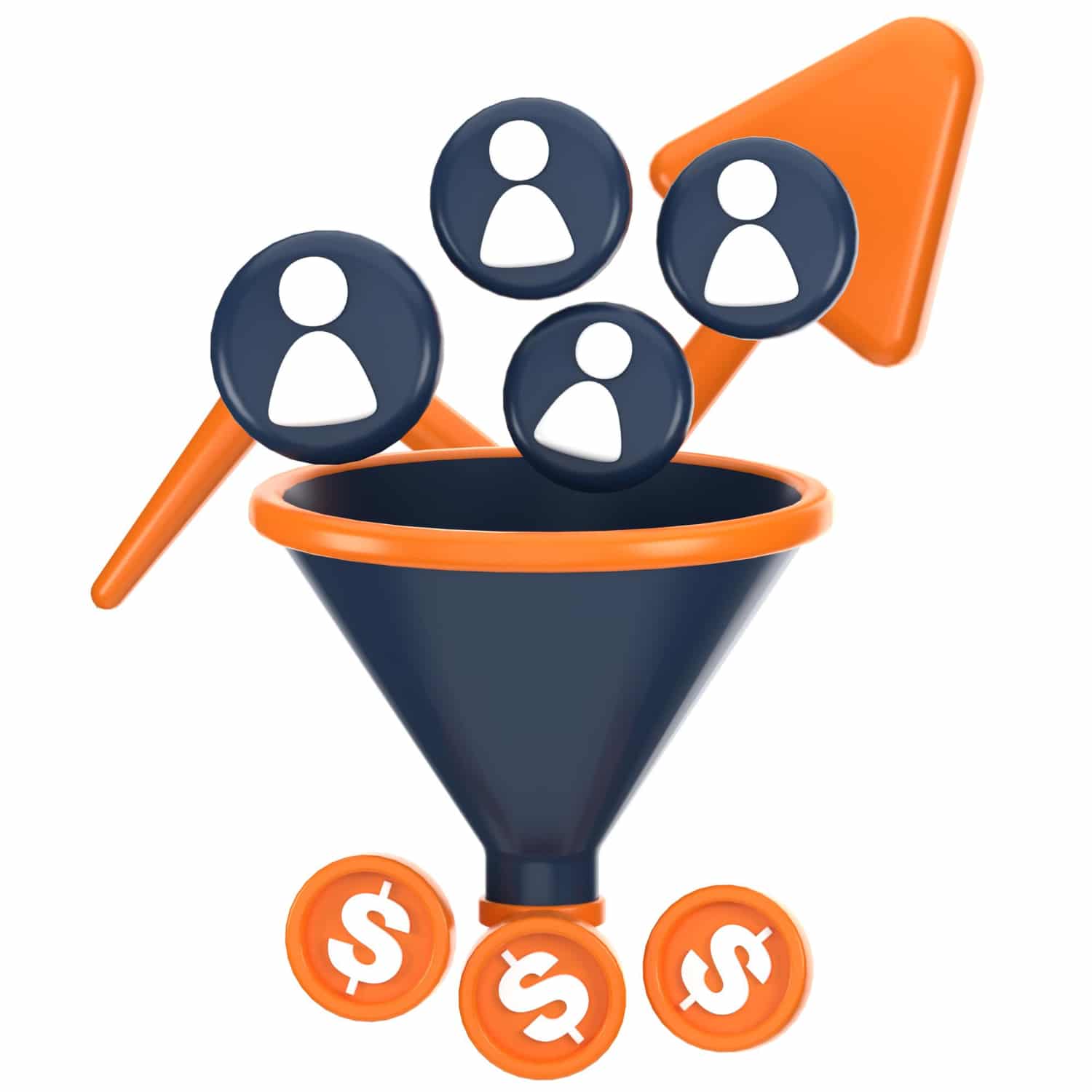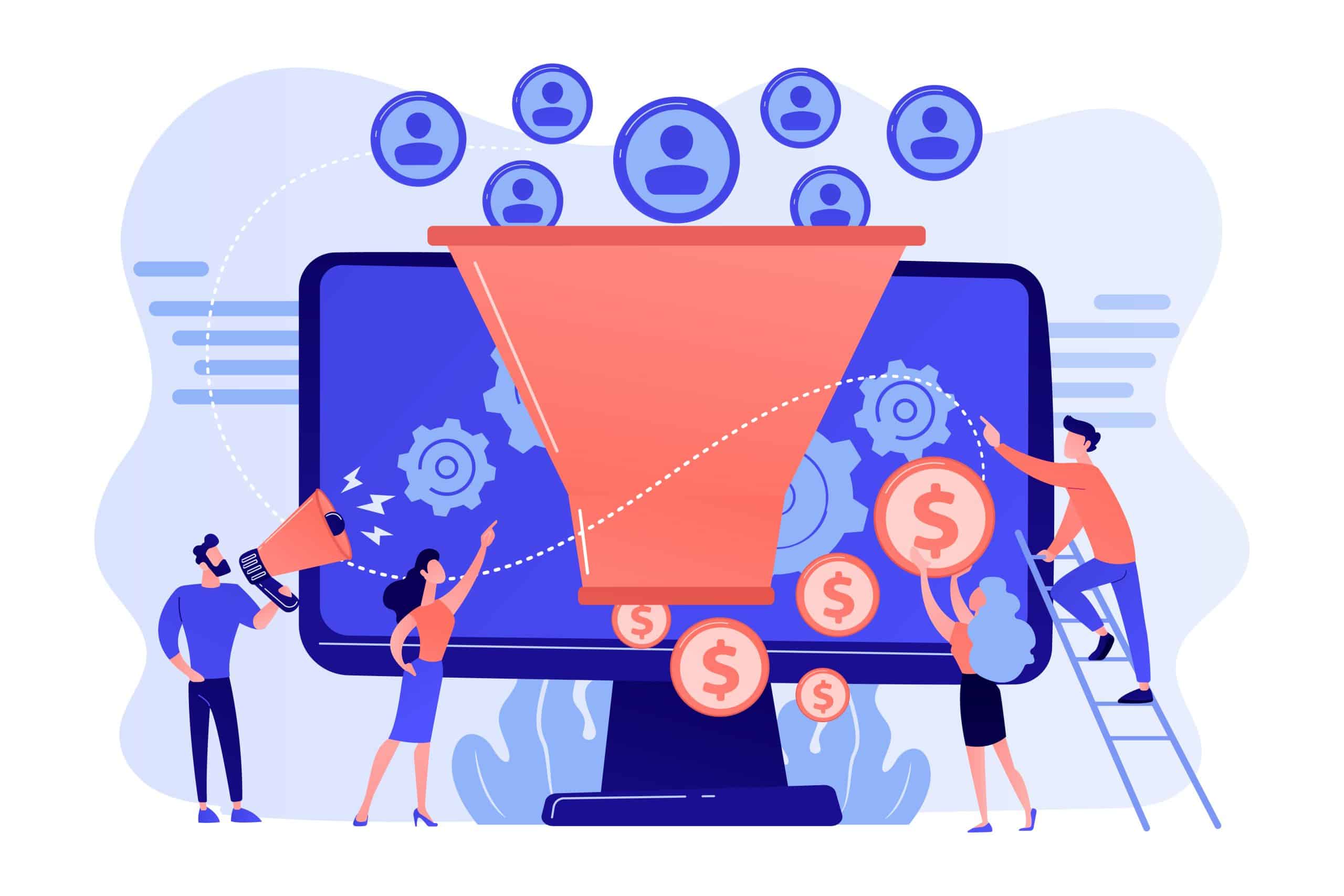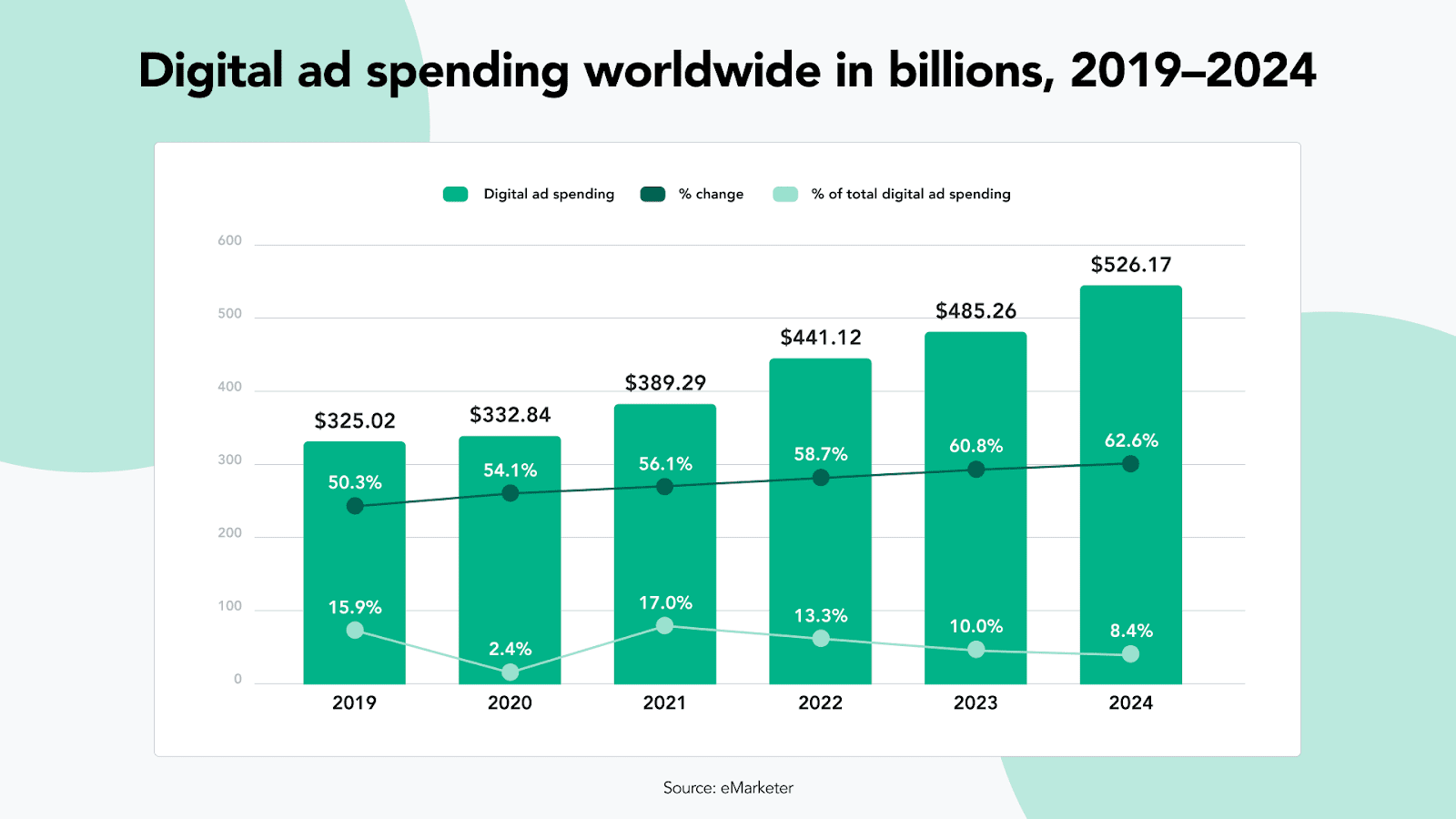
In today’s fast-paced digital world, businesses are constantly on the lookout for effective ways to attract customers and increase their revenue. And that’s where lead generation comes in. A strategic approach that focuses on identifying and nurturing potential customers, lead generation is the lifeblood of any successful company or professional practice.
But what exactly is lead generation? Simply put, it’s the process of capturing interest from individuals or companies who have shown an inclination towards your product or service. These individuals, known as leads, are then nurtured through various marketing strategies until they become paying customers.
So why is lead generation so crucial for companies? Well, imagine having a pool of eager prospects at your fingertips – people who are genuinely interested in what you have to offer. By investing time and resources into effectively generating leads, businesses can tap into this vast potential customer base and significantly boost their sales.
Now that we understand its importance let’s dive into some best practices for attracting quality leads! Grab your notepads because we’re about to uncover some game-changing strategies that will transform how you generate leads forever!
What is Lead Generation
Image Source: HubSpot
Lead generation is the process of capturing and converting potential customers into leads – individuals who have expressed interest in your product or service. It involves creating awareness, generating interest, and ultimately persuading prospects to take action. Modern brands make use of various lead generation strategies such as:
- Blogging
- Email marketing
- Social media marketing
- Networking
- Coupons
- Live events and seminars
- Website landing pages
At its core, lead generation revolves around understanding your target audience and crafting compelling messaging that resonates with them. By utilizing various marketing channels such as digital marketing, email marketing, social media marketing, and blog writing, businesses can effectively capture the attention of their ideal customers.
One key aspect of successful lead generation is identifying your unique value proposition – what sets you apart from competitors? This helps create a strong brand identity that attracts quality leads who align with your offerings.
Furthermore, engaging with these leads through personalized interactions builds trust and establishes brand loyalty. By providing valuable content or offers that address their pain points or desires, businesses can nurture these leads along the buyer’s journey.
It’s important to note that lead generation isn’t just about increasing the number of leads; it’s about improving lead quality. Quality leads have a higher likelihood of converting into paying customers. To source and identify quality leads, businesses must define their target market clearly and utilize effective targeting strategies.
Another way to improve lead quality is through lead scoring – assigning values to each lead based on factors such as demographics, engagement level, or buying intent. This allows companies to prioritize their efforts towards high-value prospects while nurturing other potential customers accordingly.
To optimize lead generation efforts further, leveraging data analytics becomes crucial. Monitoring metrics like website visitor conversions and segmenting data can provide valuable insights for refining targeting strategies and improving ROI.
Landing pages also play a pivotal role in successful lead generation campaigns by providing tailored experiences for visitors which encourage them to take specific actions such as filling out forms or making purchases.
In this ever-evolving digital landscape where competition is fierce for customer attention, lead generation has become an essential component for business growth. By implementing best practices and utilizing effective tools and strategies, companies can unlock the potential of lead generation
Why is Lead Generation important for Companies
Lead Generation is a crucial aspect for companies in today’s highly competitive business landscape. It serves as the lifeblood of any organization, driving growth and revenue. But why exactly is lead generation so important? Let’s delve into it.
Lead generation allows companies to identify potential customers who have shown interest in their products or services. By capturing contact information through various channels such as websites, social media platforms, and landing pages, businesses can initiate meaningful conversations with these prospects.
Furthermore, lead generation enables companies to build a database of potential customers that they can nurture over time. By consistently engaging with these leads through email marketing campaigns or social media interactions, organizations can move them along the sales funnel and eventually convert them into paying customers.
Moreover, effective lead generation helps businesses improve their overall marketing efforts by enabling data-driven decision making. By analyzing the demographics and behavior patterns of quality leads generated, companies gain valuable insights on how to better target their ideal customers and tailor their marketing strategies accordingly.
Additionally, having a steady stream of quality leads allows companies to increase their number of conversions on websites. With targeted landing pages specifically designed for different customer segments based on lead data segmentation analysis, businesses can optimize user experience and boost conversion rates significantly.
In conclusion (I know you said not to conclude but I couldn’t help it!), Lead Generation plays an integral role in helping companies and professional practices grow by attracting quality leads, nurturing relationships with potential customers, and improving overall marketing efforts. It provides valuable insights that enable organizations to make informed decisions about targeting strategies, messaging, and offers.

Best practices to attract quality leads
In the world of lead generation, attracting quality leads is crucial for businesses looking to grow and succeed. But how can you ensure that the leads coming your way are not only numerous but also high in quality? Here are some best practices to consider:
1. Identify Your Ideal Customers: To attract quality leads, it’s essential to know who your ideal customers are. Take the time to understand their needs, pain points, and preferences.
2. Craft a Unique Value Proposition: A strong unique value proposition (UVP) sets you apart from competitors and appeals directly to your target audience. Clearly communicate why customers should choose your product or service over others.
3. Optimize Your Digital Marketing Efforts: Use various digital marketing channels such as email marketing and social media marketing to reach potential leads effectively. Tailor your messaging and content strategy based on each platform’s unique characteristics.
4. Create Engaging Content: Develop informative blog posts, videos, webinars, or e-books that provide value to your target audience. Focus on solving their problems or answering their questions while showcasing your expertise.
5. Implement Lead Nurturing Strategies: Once you’ve captured a lead’s attention, nurture them through personalized communication journeys tailored specifically to their interests and stage in the buying process.
6. Leverage Data Analytics: Regularly analyze data related to lead generation efforts – including website visitor conversions and lead data segmentation – in order to identify areas for improvement and make informed decisions about where resources should be allocated.
By implementing these best practices consistently, businesses can improve both the quantity and quality of their generated leads while increasing brand loyalty among existing customers – all leading towards improved ROI!
Engage with quality leads
Engaging with quality leads is crucial for any company’s success in lead generation. Once you have identified and attracted these potential customers, it’s important to establish a meaningful connection with them. Engagement allows you to build trust, showcase your unique value proposition, and ultimately convert leads into loyal customers.
One effective way to engage with leads is through personalized communication. Tailor your messaging based on their interests, pain points, and stage in the buyer’s journey. This could include sending targeted emails or creating custom content that addresses their specific needs.
Another strategy is to leverage social media platforms to interact with your audience. Engage in conversations, respond promptly to inquiries or comments, and share valuable information that resonates with your target customers.
Additionally, hosting webinars or live events can provide an opportunity for direct interaction with leads. These interactive sessions allow you to address their queries in real-time while showcasing your expertise.
Furthermore, providing exceptional customer service throughout the buying process can leave a lasting impression on leads. Promptly addressing concerns or issues demonstrates your commitment towards meeting their needs and fosters brand loyalty.
To ensure effective engagement, be proactive in gathering feedback from leads about their experiences interacting with your brand. Use this feedback loop as an opportunity for continuous improvement and refinement of your lead generation strategies.
By actively engaging with quality leads at every touchpoint along the customer journey, you increase the chances of converting them into satisfied customers who will not only make repeat purchases but also advocate for your brand among others in their network!
How to source and identify quality leads
One of the key challenges that companies face in lead generation is sourcing and identifying quality leads. In order to effectively reach their target customers, businesses need to have a clear understanding of who their ideal customers are and how to find them.
To begin with, it’s important for companies to define their target audience. This involves thoroughly researching and analyzing the characteristics, behaviors, and preferences of their potential customers. By doing so, businesses can create detailed buyer personas that provide valuable insights into the needs and wants of their ideal customers.
Once the target audience has been identified, the next step is to determine where they can be found online. This could be through various channels such as social media platforms, industry-specific forums or communities, or even through partnerships with complementary businesses.
Additionally, leveraging data analytics tools can greatly assist in identifying quality leads. These tools enable companies to track website visitors’ behavior and collect valuable information about them such as demographics and interests. With this data at hand, businesses can then segment their leads based on specific criteria which allows for more personalized marketing efforts.
Furthermore, implementing lead scoring techniques can also help in identifying high-quality leads. Lead scoring assigns scores based on certain actions or behaviors exhibited by prospects (e.g., downloading a whitepaper or attending a webinar). The higher the score assigned to a lead indicates a greater likelihood of conversion.

How to improve lead quality
Improving lead quality is crucial for any company’s success in generating meaningful conversions and driving revenue. Here are some effective strategies to enhance the quality of your leads.
1. Define Your Ideal Customer: Start by clearly identifying who your target audience is and what their needs, pain points, and preferences are. This will help you tailor your marketing efforts towards attracting high-quality leads that align with your brand.
2. Craft a Unique Value Proposition: Clearly communicate what sets your product or service apart from competitors. Highlight the unique benefits customers can expect by choosing your offering, which will attract leads who genuinely resonate with your value proposition.
3. Enhance Brand Loyalty: Building strong relationships with existing customers not only boosts customer satisfaction but also increases the likelihood of referrals and repeat business. Happy customers are more likely to recommend you to others, leading to higher-quality referral leads.
4. Optimize Lead Data Analytics: Leverage analytics tools to track and analyze lead data effectively. By understanding key metrics like conversion rates, sources of traffic, and engagement levels, you can identify areas for improvement and focus on channels that generate high-quality leads.
5. Implement Smart Lead Scoring: Develop a lead scoring system that assigns values based on criteria such as demographics, behavior patterns, level of interest shown, or engagement with specific content types or actions taken on your website or social media platforms.
6 . Segment Leads for Personalization : Divide your leads into different segments based on common characteristics such as industry type or job title so you can create tailored marketing campaigns that speak directly to their interests and needs.
By implementing these strategies consistently over time while continuously monitoring results through data analysis ,you can improve both the quantity and quality of leads generated ,leading to improved ROI
Marketing-Sales Feedback Loop
One of the most crucial aspects of successful lead generation is establishing a strong marketing-sales feedback loop. This loop ensures that there is continuous communication and collaboration between your marketing and sales teams, enabling them to work together seamlessly towards generating quality leads.
In this feedback loop, your marketing team provides valuable insights about the leads they have generated to the sales team. This information includes data on lead demographics, behaviors, engagement levels, and conversions. Armed with these insights, your sales team can prioritize their efforts and tailor their approach to engage with potential customers more effectively.
On the other hand, the sales team also plays a vital role in providing feedback to the marketing team. They can share valuable input about which types of leads are converting successfully and why. This information helps marketers refine their strategies and target ideal customers more accurately.
By creating an effective feedback loop between marketing and sales, you can improve lead quality significantly. Marketing campaigns can be fine-tuned based on real-time data from the sales team’s interactions with leads. The knowledge gained from these interactions allows for better segmentation of leads based on their interests, needs, or pain points.
Furthermore, this collaboration enables both teams to align their goals and objectives closely. By working towards common targets such as increasing website visitor conversions or improving lead data analytics accuracy, both departments become more accountable for driving results collectively.
Implementing a robust marketing-sales feedback loop improves ROI by maximizing resources efficiently while enhancing customer experiences throughout their journey with your brand.
Introduction to Lead Generation
Lead generation is a vital aspect of any company’s marketing strategy. It involves attracting and capturing potential customers’ interest in order to generate sales leads. But what exactly is lead generation? In simple terms, it refers to the process of identifying and nurturing potential customers who are likely to be interested in your products or services.
The goal of lead generation is not just about increasing the number of leads, but also about improving the quality of those leads. By targeting the right audience with a unique value proposition, you can attract high-quality leads who are more likely to convert into paying customers.
To effectively generate leads, it’s important to understand your target audience and their needs. This requires conducting thorough market research and creating buyer personas that represent your ideal customers. By understanding their pain points and motivations, you can tailor your marketing messages specifically for them.
One effective way to capture leads is through digital marketing channels such as email marketing and social media marketing. These platforms allow you to reach a wider audience and engage with them directly. Creating informative blog posts, offering valuable resources like e-books or webinars, or running targeted ads can help drive traffic to your website where visitors can provide their contact information in exchange for something valuable.
Another crucial aspect of lead generation is optimizing landing pages on your website. A well-designed landing page should have clear call-to-action buttons that encourage visitors to take action such as signing up for a newsletter or requesting a free consultation. Implementing lead capture forms on these pages will help gather essential data from potential customers which can then be used for further engagement.
In addition, implementing effective lead scoring methods helps prioritize follow-up efforts based on the level of interest demonstrated by each lead. This ensures that sales teams focus their time and energy on prospects most likely ready for conversion while continuing nurturing relationships with others until they become qualified leads.
By continuously monitoring key metrics such as website visitor conversions, lead data analytics, and ROI from different campaigns using tools like Google Analytics and CRM software, you can refine your lead generation strategies to
The Importance of Lead Generation
Lead generation is a crucial aspect of any business, regardless of its size or industry. It involves attracting potential customers and converting them into leads that can eventually be nurtured into loyal customers. But why is lead generation so important?
Lead generation helps companies expand their customer base and increase their revenue. By consistently generating new leads, businesses have a steady stream of prospects to engage with and convert into paying customers.
Lead generation allows companies to target specific demographics and ideal customers who are more likely to be interested in their products or services. This targeted approach ensures that marketing efforts are focused on those who are most likely to convert, resulting in higher conversion rates.
Lead generation provides valuable data for businesses to analyze and optimize their marketing strategies. By tracking the sources of leads, measuring conversions, and analyzing demographic information, companies gain insights into what works best for attracting quality leads.
In addition to these benefits, effective lead generation also contributes to brand loyalty by building relationships with potential customers from the very beginning. By providing value through informative content or personalized offers tailored to their needs or pain points, brands can establish trust and credibility early on.
Lead generation plays a pivotal role in driving business growth by increasing the number of leads generated while improving the quality of those leads. Through various digital marketing channels such as email campaigns, social media marketing efforts,and blog writing , companies can engage with their target audience effectively leading towards increased ROI . With an optimized strategy in place,businesses can continually refine their tactics based on data analytics thus making it an essential component for success in today’s competitive market.
The Different Types of Lead Generation
Lead generation is a critical component of any successful marketing strategy. It involves attracting and capturing potential customers’ interest in your products or services, with the ultimate goal of converting them into paying customers. There are several different types of lead generation tactics that businesses can employ to reach their target audience.
One popular method is digital marketing, which encompasses various online channels such as email marketing, social media marketing, and blog writing. These platforms allow companies to connect with their ideal customers and showcase their unique value proposition.
Another effective way to generate leads is through content marketing. Creating valuable and informative content not only helps establish brand loyalty but also attracts potential customers who are actively searching for solutions.
Additionally, optimizing landing pages can significantly increase the number of leads captured. By creating compelling offers and clear calls-to-action on these pages, businesses can entice visitors to provide their contact information.
Utilizing lead scoring techniques can help identify high-quality leads based on certain criteria such as demographic data or engagement level. This allows sales teams to prioritize efforts towards prospects most likely to convert into paying customers.
There are multiple strategies available to businesses for generating leads effectively. By implementing a combination of digital marketing tactics like email campaigns and social media outreach alongside strong content creation efforts and optimized landing pages, companies can improve lead quality while maximizing ROI.

Best Practices for Effective Lead Generation
One of the key factors in successful lead generation is implementing best practices that can help attract and convert quality leads. Here are some effective strategies to consider:
1. Understand your ideal customers: To generate high-quality leads, it’s crucial to have a clear understanding of your target audience. Research their needs, pain points, and preferences so you can tailor your messaging and offers accordingly.
2. Craft a unique value proposition: Differentiate yourself from competitors by clearly communicating the unique benefits your products or services offer. This will capture the attention of potential leads who are actively seeking solutions.
3. Utilize multiple marketing channels: Take advantage of various digital marketing channels such as email marketing, social media marketing, and blog writing to reach a wider audience. Each channel has its own strengths in engaging different segments of your target market.
4. Optimize landing pages: Create dedicated landing pages with compelling content and persuasive calls-to-action (CTAs). These pages should be optimized for search engines to increase visibility and entice visitors to take action.
5. Implement lead scoring: Assign scores based on lead behavior, engagement level, demographics, etc., to prioritize follow-up efforts with higher-quality leads who are more likely to convert into paying customers.
6. Improve lead data segmentation: Categorize leads into specific segments based on factors like industry or geography for personalized communication tailored to their specific needs or interests.
By implementing these best practices consistently over time, you’ll be able to improve lead quality, increase the number of qualified leads generated, enhance lead data analytics for better insights into customer behaviors and preferences, and ultimately boost ROI.
For brands, why is lead generation important?
The actions a customer takes to make their first purchase look natural when they express interest in your brand’s goods or services. You’ve just assisted them in meeting a need or resolving an issue.
A person may feel pressured to spend their money if they are not interested in what you have to offer but you still try to get them to buy it. This could damage the reputation of your business by giving the impression to the customer that they were coerced into purchasing your goods.
You can make sure that your brand is well matched with the right clients by focusing on your target audience only through lead generation. Additional advantages of lead generation include: • Target the correct clients – Businesses can concentrate their efforts on focusing on particular markets, which will save costs and boost revenue (better return on investment).
• Enhanced awareness – Lead generation has the potential to enhance brand recognition and image. Once consumers learn about your brand, you may provide them with additional details on the characteristics and advantages of your products.
• Possibility to obtain crucial marketing data from prospects – Lead generation offers the chance to obtain valuable prospect information. Customer data, such as requirements, preferences, and wishes, can help you customize your offering to meet the demands of your clients. For instance, companies can use registration forms to get this information.
• Brand Loyalty: Businesses can increase their consumer base by creating more cohesive groups of like-minded individuals.
When evaluating a lead generation campaign’s success, most marketing teams look at the quantity of leads generated. Conversely, sales teams concentrate on the caliber of leads. Qualifiable leads are those who satisfy your criteria, have the resources and intent to buy your goods, and are clearly intending to do so.
A company’s chances of turning a lead into a customer increase dramatically when it prioritizes lead quality. Your return on investment (ROI) will rise when you can invest with confidence in your quality leads thanks to increased conversion rates.
Citation: Ascend2
It may be possible to raise the rate of new client acquisition by concentrating on high-quality leads. Gaining new clients at a rapid pace can enable you to develop a devoted clientele fast. Long-term ROI can also be increased by doing this because you can retarget both new and current clients more quickly the faster you grow your customer base.

Source: Ascend2
Concentrating on high-quality leads can significantly raise ROI and conversion rates. But there are a few disadvantages to high-quality leads. A sales team that just concentrates on generating quality leads, for example, may disregard other responsibilities like following up with customers or delivering products.
Salespeople will continue to have to assume some risk when it comes to spending time and money on quality leads. Even with a good lead, it can still back out at the final second. Not only would you lose the business, but you would also have wasted all of the time and energy persuading the lead to buy your product.
Usually, a list of leads obtained from a lead generation effort is examined in order to assess lead quality. Lead quantity is the primary emphasis of most marketing. In order to identify the quality of each lead, marketing and sales teams will still need to go through each one.
Lead quality pros include: higher customer satisfaction when your product is matched with a target customer; better conversion rates; increased ROI; and the ability to be outsourced.
Cons of Lead Quality
• If outsourced, the company providing the leads may not have adequate product knowledge; • Quality leads are still regarded as a risk as they may back out of negotiations; and • It can be time-consuming and distracting for the sales staff.
How Do You Draw High-Quality Leads?
B2B marketers assert that the following social networks are sources of leads for them:
39% of business-to-business marketers claim to have generated leads from Facebook, 30% claim to have generated leads from Twitter, and 44% claim to have generated leads from LinkedIn.
It is possible to find quality leads on social media. But it’s crucial that you choose the platform that works best for your sector. The social network that produces the most B2B leads is LinkedIn. Given that the site is designed to facilitate connections between experts and business owners, it makes sense to get started here.
Create a Test for Your Website
You can ask website visitors to complete the questions in order to qualify them as a good lead by setting up a quiz on your website. You can add value to your quiz by providing them with a free resource (e-book or PDF) at the conclusion of the test.
Speak With Prospective Leads Straight
Reaching out to business owners or executives directly is never simple when using B2B marketing. Usually, before you can speak with the boss, you have to go via other people (PAs, staff members, and receptionists). Make an effort to communicate directly with business owners via websites like LinkedIn.
Since LinkedIn is a business-focused platform, your pitch to an executive is likely to be accepted. In some cases, other platforms such as Email, WhatsApp, or Facebook might work, but you run the risk of upsetting the person you contact. Prior to using these platforms to connect with possible prospects, it is advisable to conduct some research by learning more about the individual you are reaching out to.
After you’ve effectively reached out to an executive, you need to make sure you have a polished presentation or sample prepared.
Get Suggestions
One of the best ways to get excellent leads is via referrals. If someone utilized your product and experienced positive outcomes, they would tell their friends and coworkers about it. In most cases, they won’t spread the word to people with little to no interest in your product, as it will be a waste of their time. Instead, they will ask someone who they think will have the finances and the need for your product, which matches the description of a quality lead.
However, customers won’t automatically hand you quality leads. You’ll need to ask your clients for recommendations. You can incentivize this process by offering a discount on the next purchase.
Source: Airbnb
Airbnb issues a credit to the new user that is referred, as well as to the user that made the referral. They basically implemented a referral system that incentivizes customers who produce quality leads.
If you do get in touch with a company owner or executive, you could offer them your product for free in exchange for quality leads. High-level execs network with each other all the time. If you build a good relationship with one company owner, they could introduce you to other owners and executives that would be interested in your product.
Facebook is a Source for Quality Leads
Facebook offers many customization options for businesses on their pages and groups. However, most companies don’t make full use of these options and instead, they just post content related to their products.
Pay careful attention to the layout of your facebook page and treat it like a sales page or a landing page to your website. Constantly update the page with engaging content and make sure that there is a clear Call-To-Action for leads.
How to Identify Quality Leads
The definition of a quality lead will vary according to a company’s product or service. The best place to start when identifying quality leads is by tracking all inbound leads. An example of tracking lead information is through website forms and marketing campaign software like Mailshake.
When a prospective lead fills out a form on a website to gain access to free downloadable content like a PDF or e-book, they will have to provide their information. Just by providing their name, email, and contact number, you will be able to sort the data into leads, existing customers, and spam.
If your company sells multiple products like software, apps, and technical hardware, then you could add more fields to your forms to gather more info on leads. This can further categorize your leads by department, product, interests, etc.
If you plan on acquiring leads through social media or email, then you could simply keep track of your lead interactions on a spreadsheet. Make sure to include all interactions with potential customers and leads. The more information you have, the better you will be able to asses the quality of your leads.
Manually inputting your findings into a sheet can become time-consuming and difficult to manage at times, which is why it is recommended to use lead management software.

How Do You Improve Lead Quality?
Use Lead Scoring
Lead scoring allows you to rank your leads by their interest levels and readiness to buy. You assign points to leads based on their actions and behavior on your website. There is no exclusive method for scoring leads, which is why companies define their own scoring systems to suit their needs.
Points can be awarded for:
• Visiting your website
• Opening your mails
• Clicking through to a promotion
• Downloading free resources (e-book or PDF)
• Watching a webinar
• Started a free trial

Source: Proof
Once you have totaled up the scores of all your leads, you can then rank your leads according to the scores they received. Leads with high scores are considered good leads and can be labeled as ‘hot’, ‘100%’, or ‘A’.
Leads with above-average scores are ‘warm’ leads. You can consider warming up these leads when you plan your next marketing campaign.
B2B marketers tend to further distinguish leads by their explicit data such as industry, title, and company.
Marketing-Sales Feedback Loop
The data you collect from your leads do not end when the marketer hands over the lead to the sales team. Especially during complex sales cycles. The sales team must provide feedback on every interaction with the lead to the marketing team.
If marketers wait too long, they run the risk of having to analyze old data which becomes irrelevant because the sale has already been made or lost. If all marketing does is send out leads to the sales team without feedback, they will assume that sales are being made and continue generating leads.
If marketing receives feedback from sales (weekly or monthly), they will be able to adjust future lead generation campaigns to improve the quality of the leads that are submitted to sales.
Example Strategies on How to Attract Quality Leads
Blogging
Blogging is a no brainer if you run an online business. Your company website should have a blog section that posts articles regularly. If leads find these articles useful, they will visit your website frequently.
If you write on topics centered around your product or service, then your readers will be considered as good leads, as they have an interest in your blog, which is related to your product or service.
You can effectively navigate visitors of your blog to other product landing pages by inserting links into your blog posts.
Cold Outreach
Send out a cold email to a prospective client is still an effective strategy for generating good leads. Companies don’t use cold outreach because of the fear of being labeled a spammer, but if done correctly, cold outreach will land you some quality handpicked leads.
With cold outreach, you research the companies that would benefit the most from using your product. If you sell commercial ovens, then you should research restaurants that will be most suited to use your product, then, reach out to them via email.
The same goes for an online business. If you sell an app for Shopify stores, then do your homework and create a list of Shopify stores that you can target.
Don’t send out the same email to every single Shopify or eCommerce store out there. That’s just spamming. Narrow down your list to Shopify stores only that require your software.
When you have your list of emails ready, you can then send out customized cold emails. Customization is key and can only be achieved by getting as much information on the prospect as possible.
Contests and Giveaways
Running contests and giveaways is an excellent way of generating leads. Contestants exchange emails for a chance to win a prize. If you select a prize that your ideal leads are interested in, then they would possibly enter your contest.
Contests and giveaways are viral in nature and are held over a short period. This means that you can generate large amounts of leads within a short space of time. You can then work on analyzing and ranking your newly acquired leads.
People love free stuff, even in the B2B marketplace. You could offer discounts on SaaS software if you wish to attract B2B leads. An example would be to offer a marketing tool bundle that includes your product, and other products that complement yours.Source: Vyper
Hosting a contest or a giveaway might seem difficult to manage. However, you can use a service like Vyper to manage your giveaway and all the leads that your contest generates.
Tools and Strategies for Successful Lead Generation
When it comes to successful lead generation, having the right tools and strategies in place can make all the difference. With advancements in technology and the ever-evolving digital landscape, there are now countless resources available to help businesses attract quality leads.
One tool that has proven to be extremely effective is email marketing. By crafting compelling and personalized emails, you can engage with your target audience on a more intimate level. Social media marketing also plays a crucial role in lead generation by allowing you to reach a wider audience and build brand loyalty.
In addition to these tactics, blog writing can be an excellent strategy for attracting quality leads. By providing valuable content that addresses your ideal customers’ pain points, you position yourself as an industry expert while simultaneously capturing their attention.
Another essential tool for successful lead generation is utilizing landing pages. These dedicated pages allow visitors to focus solely on your offer or product, increasing the likelihood of conversion. To further improve lead data analytics and segmentation, consider implementing customer relationship management (CRM) software.
Lead scoring is another valuable strategy that helps prioritize potential customers based on their engagement levels with your brand. This approach allows you to focus your efforts on those most likely to convert into paying customers.
Identifying the right tools and implementing effective strategies will greatly enhance your lead generation efforts. By using techniques such as email marketing, social media marketing, blog writing, landing pages, CRM software integration, and lead scoring, you’ll not only increase the number of leads but also improve their quality – ultimately leading to improved ROI for your business.
Common Mistakes to Avoid in Lead Generation
When it comes to lead generation, there are certain mistakes that can hinder your efforts and prevent you from achieving optimal results. It is important to be aware of these common pitfalls so that you can avoid them and increase your chances of success.
One common mistake is not having a clear understanding of your target audience. Without knowing who your ideal customers are, it becomes difficult to tailor your marketing strategies and messages effectively. Take the time to define your target customers and create buyer personas that reflect their needs, preferences, and pain points.
Another mistake is failing to communicate a unique value proposition (UVP). Your UVP sets you apart from competitors and gives potential leads a compelling reason to choose your products or services. Make sure that your messaging clearly communicates what makes you different and how you can solve their problems.
Ineffective use of digital marketing channels is another mistake many businesses make. Email marketing, social media marketing, content creation through blogging – these channels offer great opportunities for lead generation if used strategically. Don’t neglect any channel; instead, determine which ones will best reach your target audience.
Lack of proper follow-up with leads is also a common pitfall in lead generation efforts. Once someone has shown interest in what you have to offer by providing their contact information or engaging with your content, it’s crucial to nurture those leads through regular communication and personalized interactions.
Failing to track key metrics and analyze data can be detrimental when it comes to improving lead quality. By monitoring metrics such as conversion rates, ROI on specific campaigns, website visitor conversions etc., you gain valuable insights into what’s working well and where improvements can be made.
Avoiding these common mistakes will greatly enhance the effectiveness of your lead generation efforts while maximizing the potential for growth and success for your business.
Frequently Asked Questions (FAQs) about Lead Generation
- Lead generation: What Is It?
The process of drawing in potential customers and piqueing their interest in your business’s goods and services is known as lead generation. You can employ a variety of online and offline techniques, including content marketing, email campaigns, social media interaction, and other tactics, to generate leads.
- What Makes Lead Generation Vital?
Any effective marketing plan must include lead generating. It enables you to draw in and recognize prospective clients who are actively seeking out the goods or services your company provides. You may develop a far more successful advertising campaign that increases conversion rates and enhances return on investment by focusing on these individuals.
- How Can I Produce Leads?
To create leads, there are numerous approaches. You can employ remarketing campaigns on social media sites like Facebook, LinkedIn, and Twitter, compose letters that highlight your goods and services, produce content specifically for your target audience, or take advantage of referral networks and joint ventures with other companies. To improve your website’s organic search engine rankings, you can also employ SEO strategies.
- A Lead Generation Tool: What Is It?
Software or web-based services called lead generation tools are made to assist organizations connect with more prospects and turn them into customers.
Usually, these tools are used in conjunction with other marketing strategies including social media management, email campaigns, and website optimization. They can track engagement across several channels, score leads, automate outreach procedures, and offer a host of other advantages.
- What Sets B2B Lead Generation Apart from B2C Lead Generation?
Lead generation can be approached in two different ways: B2B and B2C. Building relationships with executives, decision-makers, and business owners is the main goal of B2B lead generation in order to offer tailored solutions that address each client’s unique demands.
The process of creating leads for companies that offer their goods or services directly to customers is known as business-to-consumer (B2C) lead generation.
Conclusion
Lead generation is a vital aspect of any successful marketing strategy. By effectively attracting and engaging with quality leads, businesses can increase their chances of converting them into loyal customers. The process of lead generation involves identifying target customers, creating unique value propositions, and using various marketing channels such as email marketing, social media marketing, and blog writing to capture their attention.
To ensure the best results from lead generation efforts, it is crucial to continuously work on improving lead quality. This can be done through strategies like lead scoring, data analytics, and segmentation. By focusing on targeting the right audience and providing valuable content tailored to their needs and preferences, businesses can significantly improve conversion rates.
It’s also important for companies to establish a strong marketing-sales feedback loop. This allows for effective communication between both teams about the quality of leads generated. Sharing insights regarding lead behavior and preferences helps align marketing efforts with sales goals while continually refining the lead generation process.
Lead generation is not just about increasing the number of leads; it’s about attracting high-quality leads that have a genuine interest in your products or services. By implementing best practices in lead generation and leveraging tools like landing pages and customer relationship management systems (CRM), businesses can improve ROI by converting more qualified leads into paying customers.
Remember that successful lead generation requires dedication, consistency, creativity, and adaptability in today’s ever-evolving digital landscape. So take the time to understand your target audience better than anyone else does; tailor your approach accordingly; provide unique value propositions; engage with prospects across multiple channels; constantly analyze data to identify areas for improvement – only then will you truly harness the power of effective lead generation!




